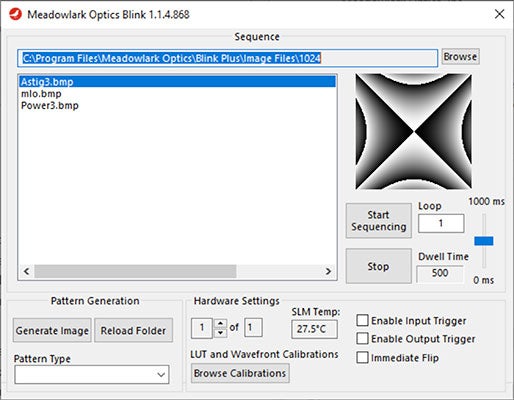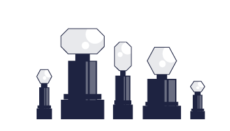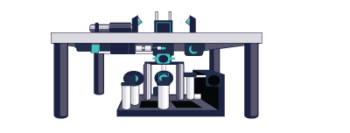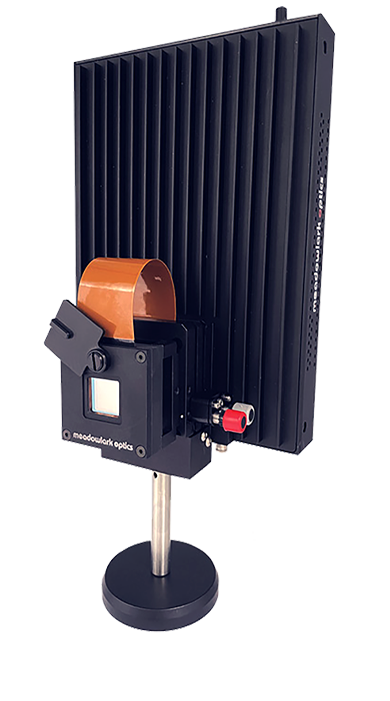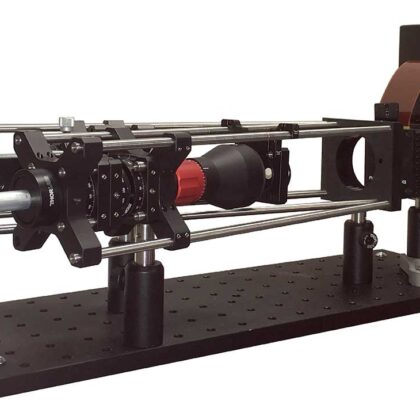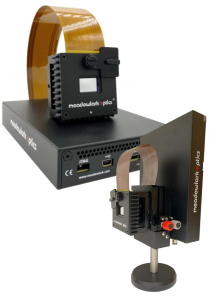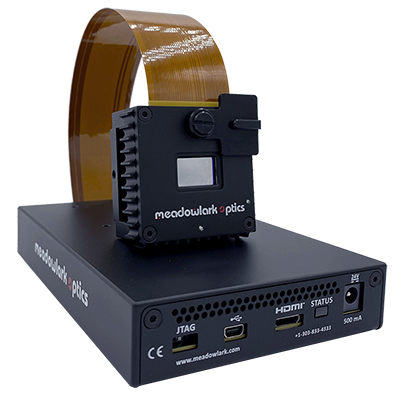Ultra High-Speed Spatial Light Modulators 1024×1024
Meadowlark’s UHSP1K is the epitome of speed in spatial light modulation. With ultra-fast response times and tuneable temperature control, it sets the standard for high-performance applications that require precise temporal and spatial control of light.
Key Features
- High Speed Performance & Phase Control: Modulation speeds up to 1kHz, with 0-2pi modulation, and 8-bit phase control.
- Active Heating: Boosts speed in comparison to the HSP1K.
- Extensive Wavelength Compatibility: Variants available to operate effectively from 488 nm to 1650 nm.
- Dielectric Mirror Coating Available: Higher zero order efficiency over a narrower range.
- PCIe Control with onboard memory and input and output triggers.
- Controllable temperature: User defined set point for optimized speed vs phase stability
- On-Board Memory: Facilitates complex image sequencing with minimal latency.
Up to 1.4 kHz Optical Switching
The 1024 x 1024 silicon backplane of Meadowlark’s SLM is designed for the highest speed applications today. With liquid crystal response times ranging from 0.6 to 8ms (depending on wavelength) for full wave modulation, it ensures rapid performance by actively heating the liquid crystal. The ultra-high-speed model allows users to control the temperature set point, optimizing the balance between switching speed and phase stability.
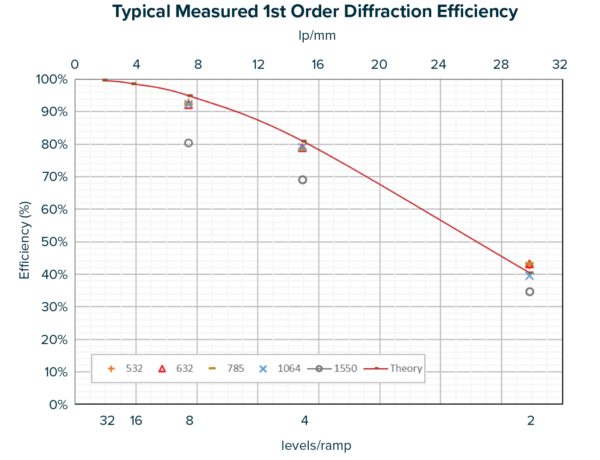
UHSP1K Diffraction Efficiency
This is the percentage of light measured in the 1st-order when writing a linear, repeating phase ramp to the SLM as compared to the light in the 0th order when no pattern is written to the SLM. Diffraction efficiency varies as a function of the number of phase levels in the phase ramp such that as the number of levels / ramp decreases, we can gain insight into the efficiency of the SLM. Below we show data taken at 1064nm with phase ramps varying from 4 to 32 phase levels between 0 and 2π.
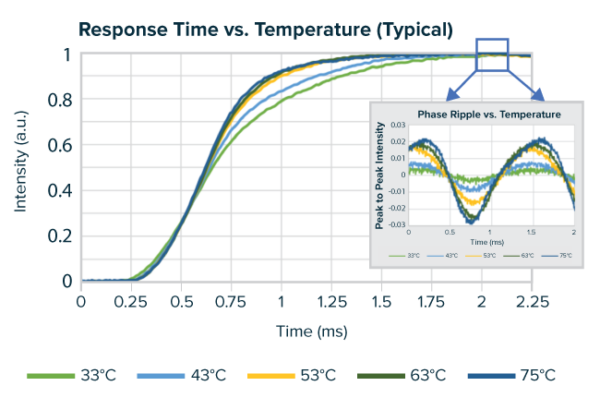
Sub-millisecond liquid crystal response times are measured in the far field. Images applied to the SLM are toggled between an 8-pixel, 2π phase grating and a solid image. Data captured while operating from 33°C to 75°C, using 10 to 90% reference levels. Results show typical switching speeds and phase stability at 532 nm.
Intuitive Software and Development Kits
- User-friendly software provided
- Intuitive image generation and sequencing
- Software development kits available for Labview, Matlab, Python and C++
Image generation capabilities include:
- Bessel beams (spiral phase, fork, concentric rings, axicons)
- Lens functions (cylindrical, spherical)
- Gratings (blazed, sinusoid)
- Various diffraction patterns (stripes, checkerboard, solid, random phase)
- Holograms
- Zernike polynomials
- Image superimposition
